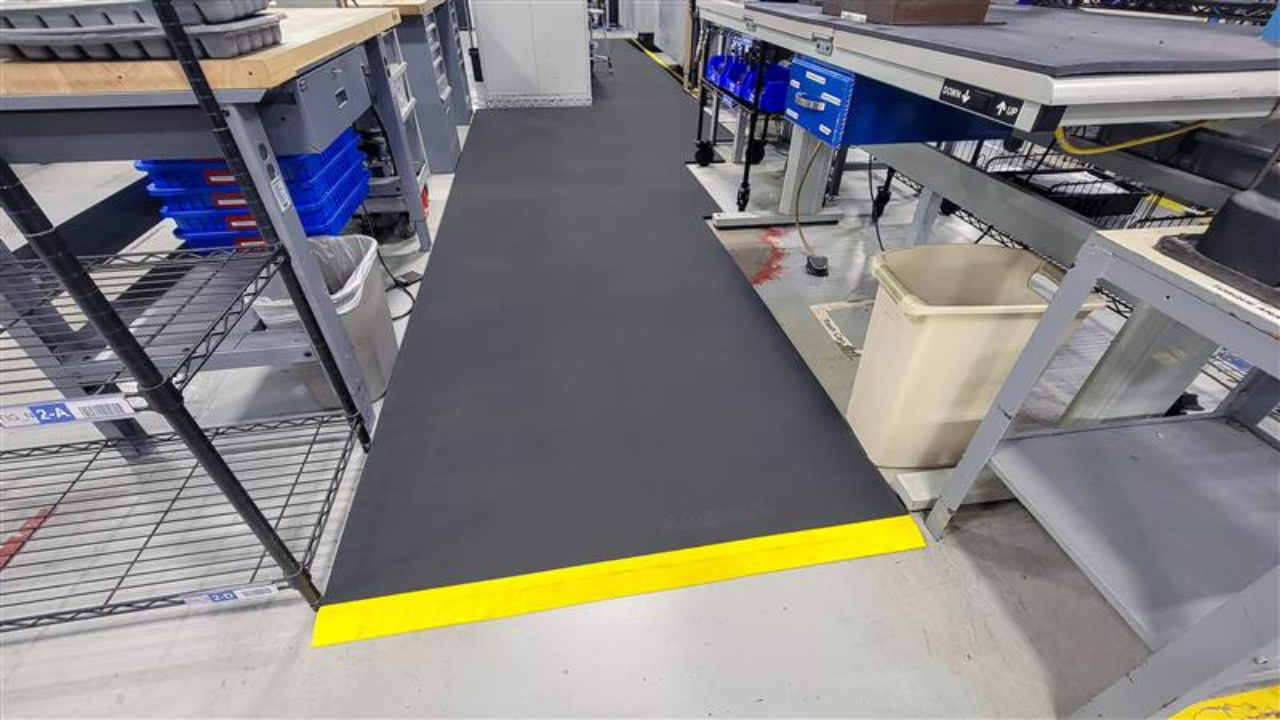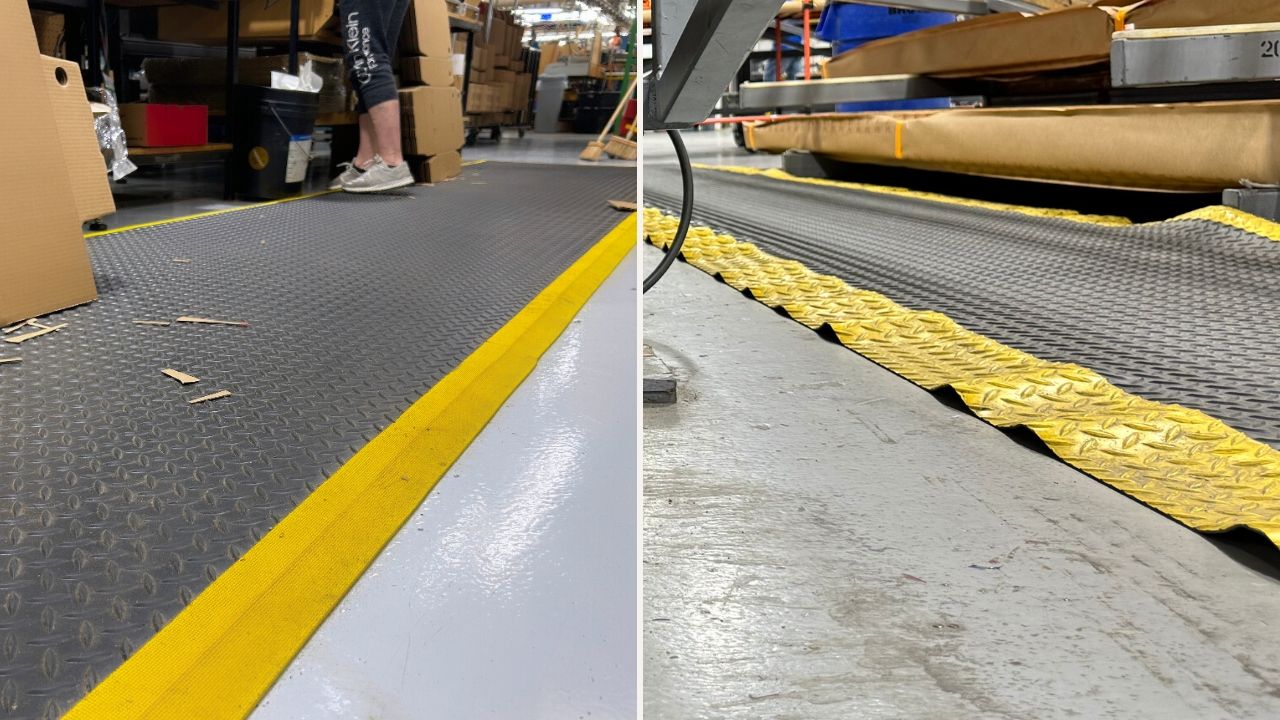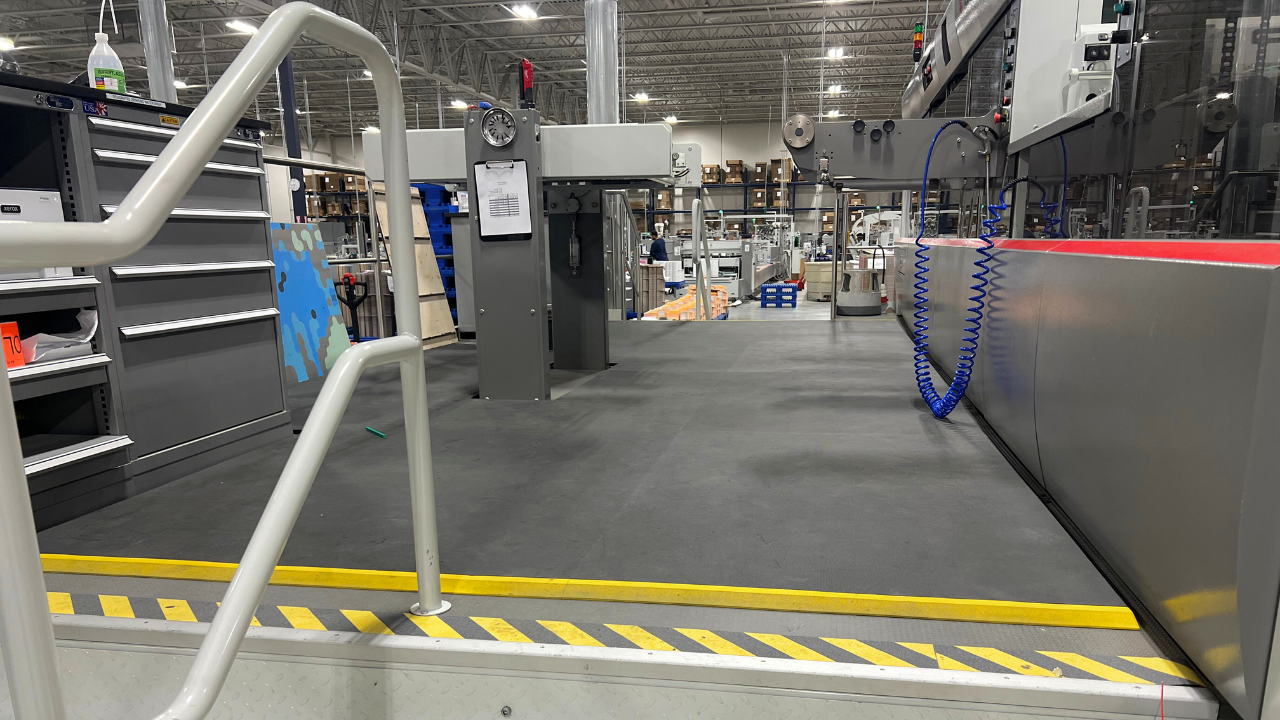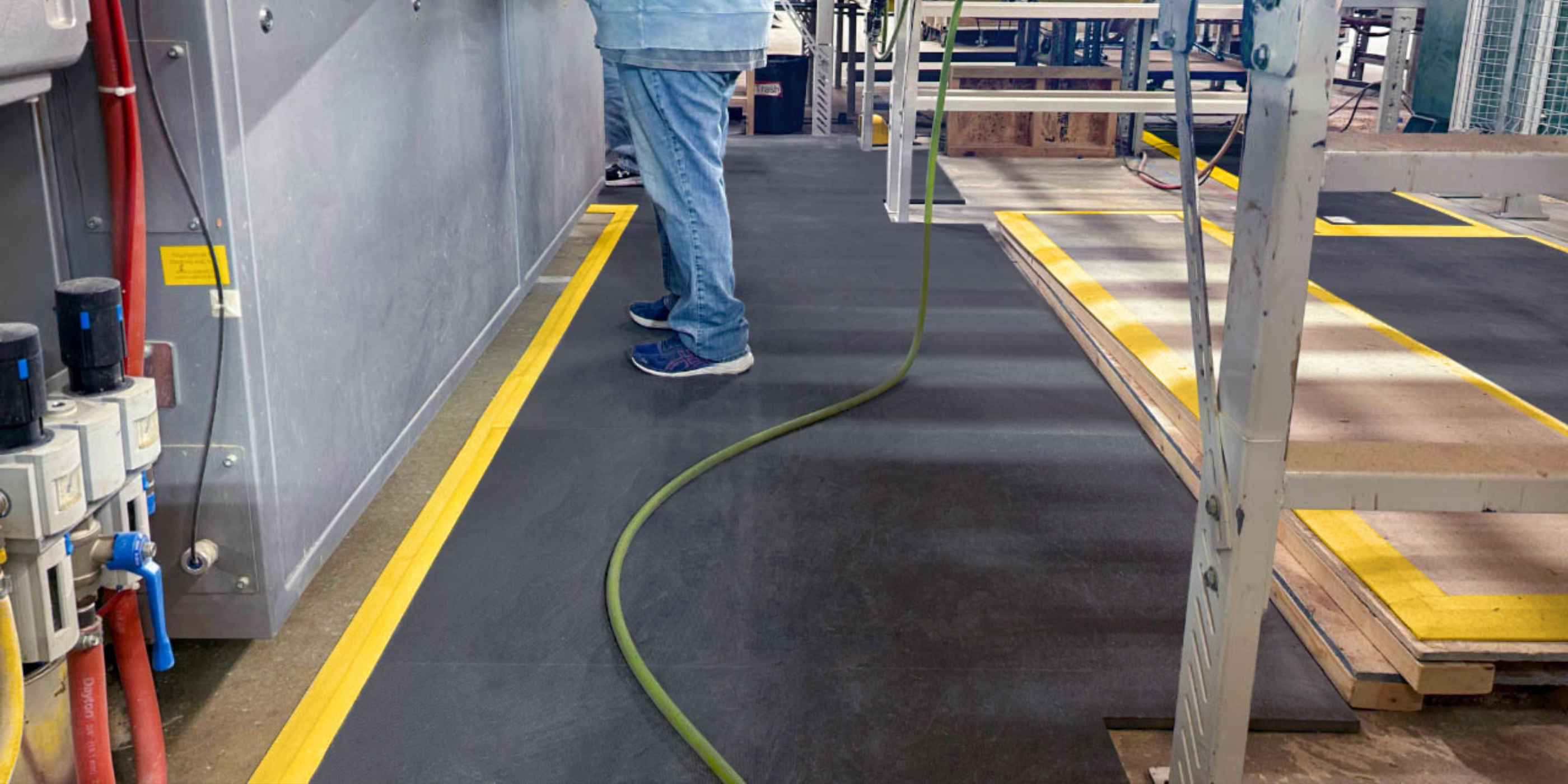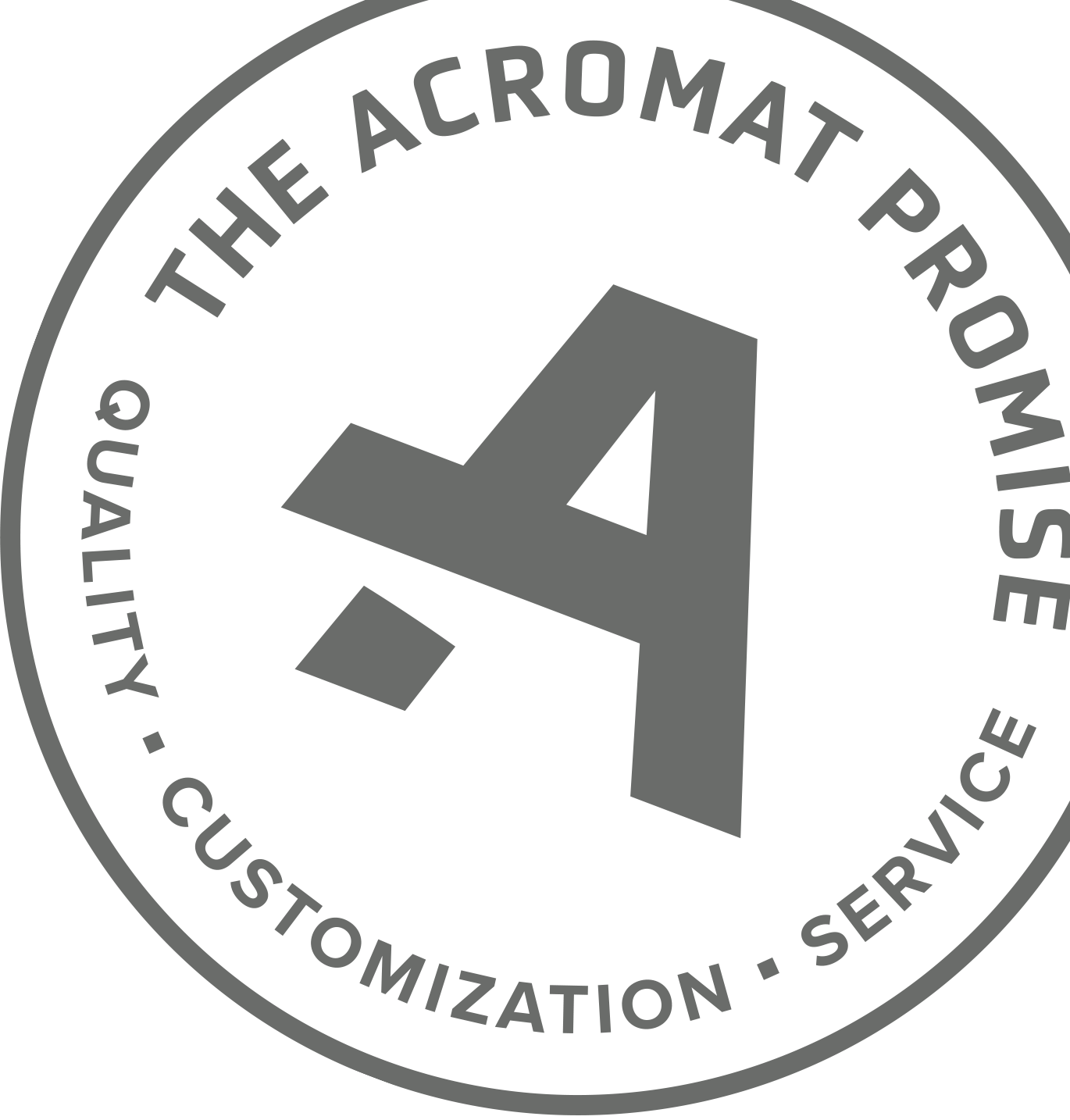Companies are bringing jobs and production back to the U.S. in record numbers. Demands are high and factories are humming. But as production needs soar, so too are challenges like the growing labor shortage, employee health and safety, lost productivity due to absenteeism and turnover, and supply chain issues.
As a custom anti-fatigue mat manufacturer, we talk to safety managers daily about their challenges and what they're doing to navigate them. Here are the top 5 challenges facing safety managers based on these conversations.
1. Skills and Labor Shortage
Manufacturing is squarely in the midst of a candidate-driven market. There are 900,000 open manufacturing roles that need to be filled. By 2030, this is predicted to reach 2.1 million. Manufacturing workers have options and are being selective.
Whether new to the field or long tenured, they are taking the roles that best suit their personal and professional needs. They’re leaving places that don’t.
We recently talked to a safety manager over a food production facility with over 50,000 employees about their recruitment challenges. They hired someone they thought was the right fit, did all the paperwork, and had a full week of introductory training. The individual quit two days later to take a different job.
Understandably, over 80% of manufacturing leaders say recruitment and retention is their biggest challenges in 2023.
Practical steps you can take:
Start by examining the state of your work environment. It’s not enough anymore to offer only “competitive pay and benefits.” Teams want proven health and safety initiatives, work-life balance, clean work areas that elevate productivity rather than work against it, and leaders who do more than talk about employee well-being.
Does your facility draw in new recruits or turn them away? Are they standing on hard cement or metal grating for 8+ hours a day? Are there trip hazards in your plant like old anti-fatigue mats being randomly pieced together?
 Before-after for aerospace and defense manufacturer; custom anti-fatigue mats on the right eliminate the need to try and piece and tape together standard mats to fill a complex layout.
Before-after for aerospace and defense manufacturer; custom anti-fatigue mats on the right eliminate the need to try and piece and tape together standard mats to fill a complex layout.
2. Absenteeism and Productivity
Manufacturing employees fill specialized and skilled positions that play a key role in the manufacturing process. An absent employee not only impacts their immediate demand but every other function downstream.
A healthy absenteeism rate is considered 1.5-1.8%. According to the Bureau of Labor Statistics, in manufacturing it’s nearly double (3.1%). This cost manufacturing companies nearly $3 billion 2022.
Musculoskeletal disorders (MSDs) are the leading cause of absenteeism and rising workers' compensation costs in manufacturing. They develop gradually over time and are injuries that impact muscles, tendons, nerves, cartilage, joints, and the spine.
Common MSDs include:
- Arthritis
- Rotator cuff strains
- Tendonitis
- Sciatic nerve issues
- Plantar fasciitis
- Shin splints
- Chronic back pain
Practical steps you can take:
According to the National Institute for Occupational Safety and Health, there is a direct connection between work environment and the development of MSDs.
At AcroMat, as a custom anti-fatigue mat manufacturer, we're biased about the best solution to improve your work environment. We've honed our mat materials and customization process over 15 years to make sure they prevent fatigue, discomfort, and injury.
But proactive ergonomic support can involve any number of solutions:
- Rotating shifts
- Orthopedic insoles
- Anti-fatigue / ergo mats
- Work table height assessments
- Ergonomic inspections and workshops
- Chiropractic care built into health plans
- Mandatory pre- and post-shift stretching routines
There are countless ways to prevent MSDs. There are countless ways to make sure your people go home from work as safe and healthy as when they arrived. The key is proactivity.
 Before-after for a metal can manufacturer; custom anti-fatigue mats on the right is made from 100% nitrile, which provides up to 8 years of proven ergonomic support.
Before-after for a metal can manufacturer; custom anti-fatigue mats on the right is made from 100% nitrile, which provides up to 8 years of proven ergonomic support.
3. Early Retirements
Baby Boomers (55+) make up 25% of the 16+ million manufacturing workforce. They bring valuable skills and experience, high character and work ethic, and leadership qualities. They are also key to the future of manufacturing, as they help train and grow entry-level staff. According to the Manufacturing Institute, 90% of surveyed leaders say they rely heavily on their 55+ employees.
Baby Boomers leaving the industry is one of the biggest culprits of the labor shortage. But why are they leaving? Health.
Health is the No. 1 reason for early retirement according to the Center for Retirement Research. It’s also one of the main reasons younger workers leave their jobs. This is especially true in a field where employees work long hours, have demanding production goals, stand for extended periods of time, and deal with heavy equipment and machinery.
Practical steps you can take:
Give Baby Boomers a reason to stay. Prioritize their health, safety, and productivity. Make sure they go home as healthy as when they arrived, and that they have the tools needed to be protected from injuries like MSDs and other safety hazards. One option is premium and customized anti-fatigue mats.
Premium mats reduce employee fatigue and joint impact by 30-50%. Unlike traditional floor mats, these ergonomic mats provide a balance of comfort and support that stimulate healthy blood flow – like staying hydrated, eating healthy, quitting smoking, and stretching. The ergonomic qualities help reduce MSDs like chronic neck, back, and lower extremity issues that come with standing for long periods of time and working extended hours.
The AcroMat 100-1 Series anti-fatigue mat, as an example, is made from 100% nitrile rubber. Unlike lower-quality materials, nitrile foam doesn’t lose its ergonomic cushion, ever, meaning workers experience the joint and pressure relief for the entire ~8-year lifespan of the mat.

This custom mat for leading windows manufacturer provides seamless, consistent traction and support for over 20 operators, a proven safety enhancement and morale booster.
Related: 7 Common Anti-Fatigue Mat Safety Hazards
4. Supply Chain
Supply chain challenges impact manufacturing more than any other industry. In a late 2022 survey by the National Association of Manufacturers, nearly 80% of leaders said supply chain disruptions was a key concern for the year ahead.
But there is a silver lining to this challenge. Manufacturing companies are bringing jobs and production back to the U.S. in record numbers to reduce reliance on vulnerable global supply chains. The “made in America” resurgence is real. Manufacturing employment grew at a 4% annual rate in 2022 – the fastest sustained pace of growth since the mid-1980's.
Practical steps you can take:
While some supply chain issues are out of your control, there is a direct link between supply chain disruption and the labor shortage. The lack of skilled workers is woven throughout the supply chain. In brief, being unable to find and keep the workers you need makes it difficult to keep up with consumer demand.
With production demands soaring and 2+ million jobs predicted to be unfilled by 2030, give yourself a leg up by positioning your workplaces to motivate candidates to join, skilled workers to stay, and both to produce at a high level.
5. Safety and Workers Compensation
Safety remains the top issue in manufacturing. Safety helps you find and keep skilled workers, reduce early retirements, limit accidents and absenteeism, and improve productivity. The No. 1 cause for workplace injuries? Trips, slips, and falls. The national average for trip and fall settlements? Over $100,000.
Safety directly affects your bottom line.
Setting aside the legal issues and lost productivity, safety managers care deeply about sending their people home healthy to their families.
Practical steps you can take:
In our experience, the best companies at safety are proactive. They establish a safety council that meets regularly, conduct safety walks, promote safety with signs and messaging, encourage and reward those who speak up with safety concerns and, most importantly, are not afraid to invest in improvements so there is noticeable change for their employees.
 This custom 100-1 Series mat wraps around a wash sink, replacing previously pieced together mats that were causing a trip hazard and ergonomic inconsistencies.
This custom 100-1 Series mat wraps around a wash sink, replacing previously pieced together mats that were causing a trip hazard and ergonomic inconsistencies.
Find Out What Drives Your Workforce
One last action step we’ve found valuable and the best safety managers make a regular habit of: Talk to your people. One in 5 manufacturing workers say they are “very likely” or “extremely likely” to leave their jobs this year. But this means 80% are planning to stay!
As the industry faces a number of challenges, many the result of the growing labor shortage, find out what drives your workforce – what motivated them to join, what motivates them to stay, what do they value most at work, what concerns do they have about their current environment, and how might they adjust operations to improve safety or efficiency?
This information can be helpful as you navigate the challenges above. Use it to keep your teams safe, healthy, and productive in 2023 and beyond.
--
Custom anti-fatigue mats don't have to be complicated: Try AcroSketch.
Try an AcroMat anti-fatigue mat today: Request a free sample.
See AcroSketch in action:
